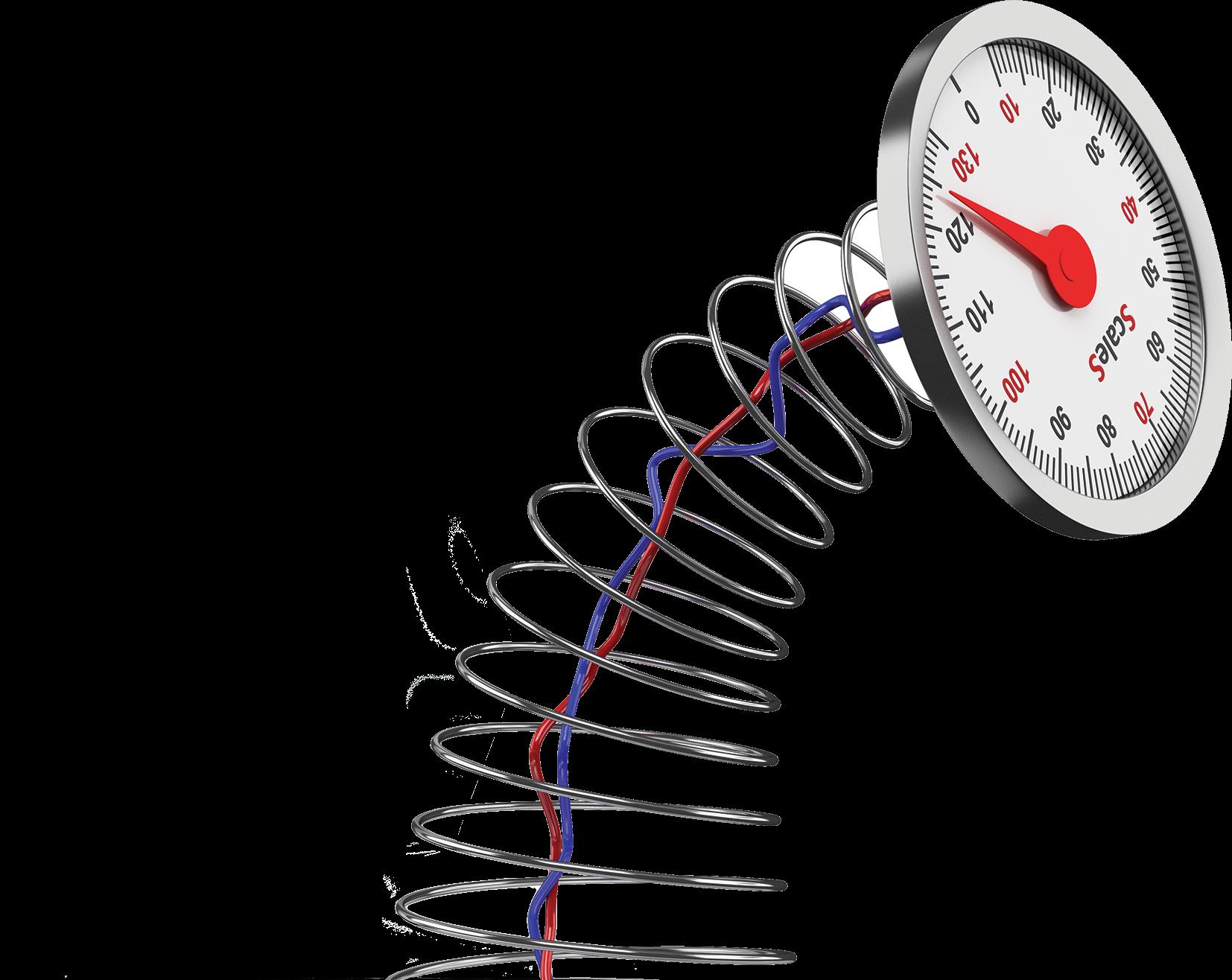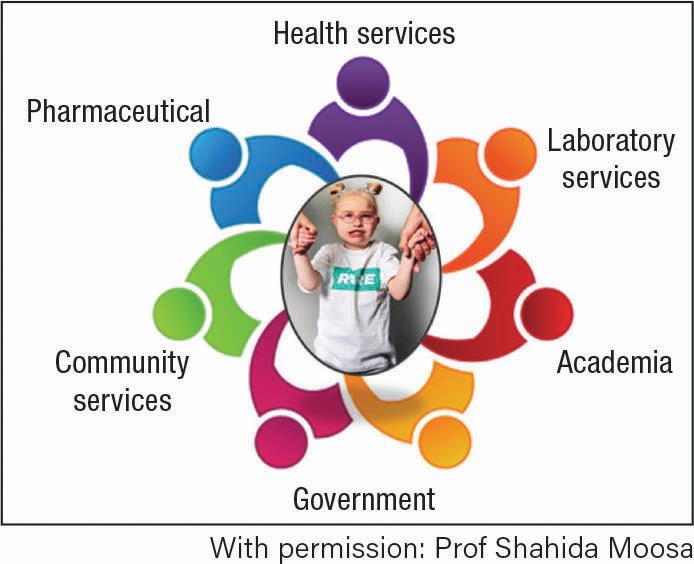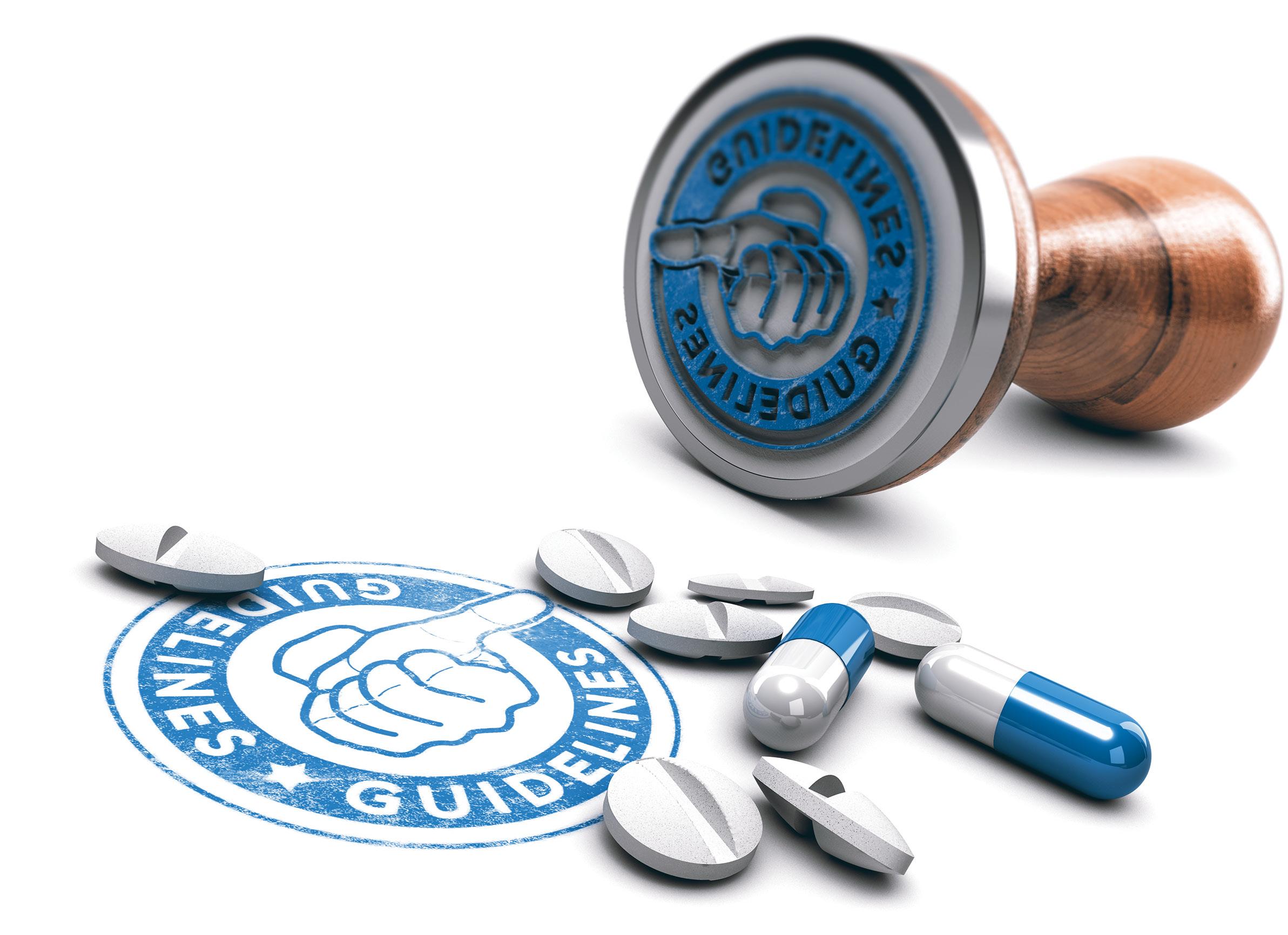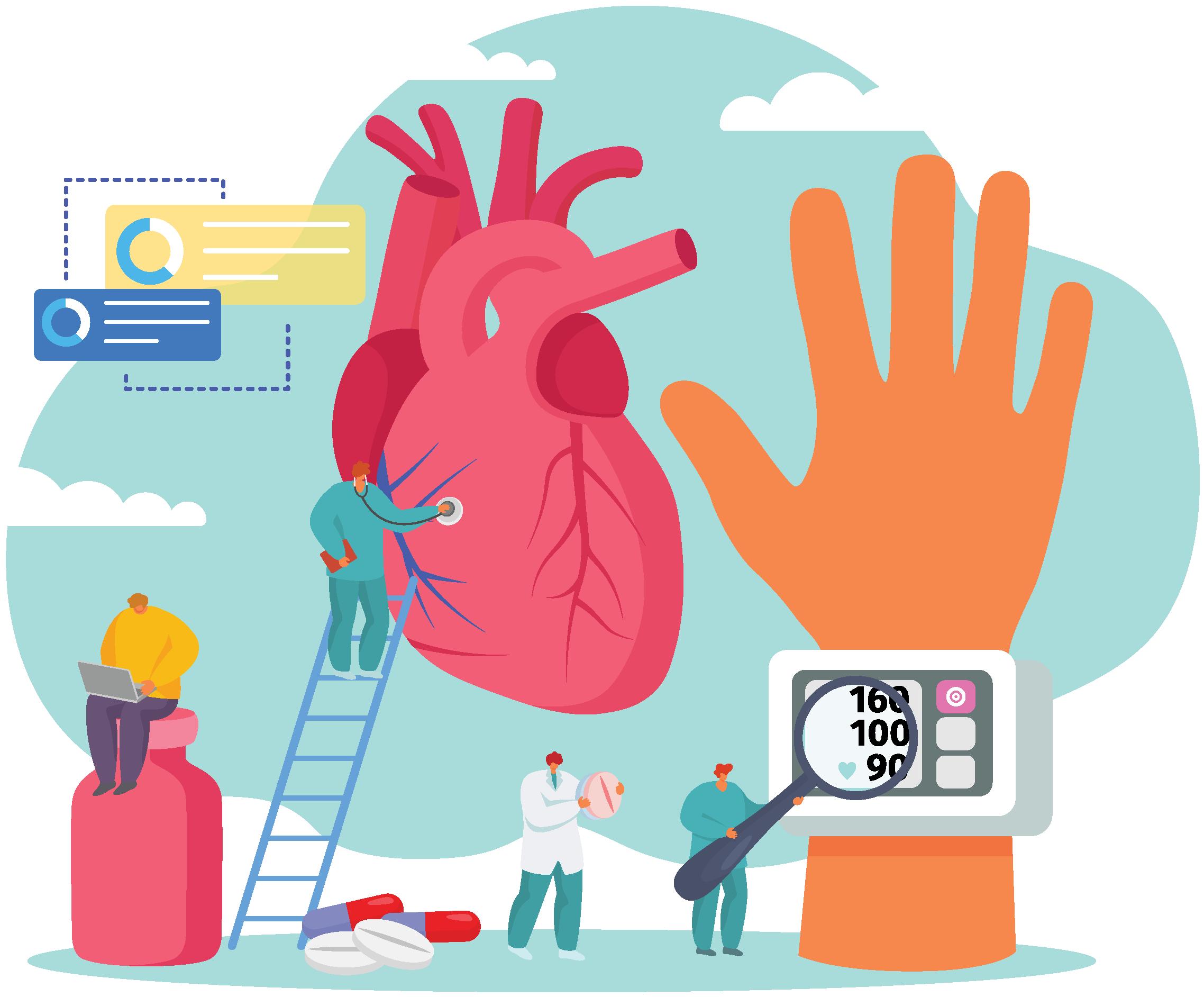
8 minute read
Tackling harmful chemicals in medical devices
Tackling harmful chemicals in medical devices
Health Care Without Harm Europe (HCWH-E) is a non-profit network of hospitals, healthcare systems and professional bodies, local authorities, research/academic institutions, and environmental organisations with branches in several countries.
Advertisement
WCWH-E recently hosted a webinar to make healthcare professionals more aware of the potential danger of harmful chemicals used in medical devices.1
Plastic medical devices: a source of harmful exposure to EDCs
Dorota Napieska, chemicals policy and projects officer, HCWH-E
Healthcare professionals rely on medical devices to treat their patients and safeguard their health. Plastic medical equipment and devices can, however, be a significant source of exposure to harmful endocrine disrupting chemicals (EDCs), including phthalates such as di(2- ethylhexyl) phthalate (DEHP) and bisphenol A (BPA).1
Phthalates are often used to make polyvinyl chloride (PVC) flexible, whilst BPA is used to produce certain plastics such as polycarbonates and epoxy resins used in medical devices. These chemicals can harm patients, not only causing infertility and neurodevelopmental issues, but can also undermine the efficacy of treatment. EDCs can impact the human body at very low concentrations and can combine with other EDCs to produce additive effects.1
In May 2021, the European Union passed legislation that requires medical device manufactures to justify why they want to use oncogenic or EDCs above a certain concentration (0.1% weight by weight) in their production processes. This strict requirement is extremely important, said Napierska, because we know that harmful chemicals – most notably BPA and DEHP – leak out in medical devices.1
While the role of exposure to EDCs and their harmful impact is well-known in the industrial sector, the role of exposure in the healthcare environment is still under-recognised, she added.1
Over the last few decades, HCWH-E has been involved in several campaigns to raise awareness of the harmful effects of EDCs in medical devices. Despite difficulties to demonstrate a causal link, some associations between EDC exposure and diseases are apparent. Foetuses, children, pregnant and breastfeeding women, and dialysis patients are particularly vulnerable to the effects of these exposures.1
Many alternative substances and materials have been developed in recent years to replace hazardous chemicals used in medical devices. Healthcare professionals can now choose between safer alternatives, or continue to ignore the potential danger to patients, she added.1
Exposure to phthalates or BPA can be minimised by adopting a precautionary approach and replacing medical devices with phthalate- and BPA-free devices.1
Exposure assessment of infants following cardiac surgery
Dr Elizabeth Eckert, Institute and Outpatient Clinic of Occupational, Social and Environmental Medicine, Friedrich-AlexanderUniversität Erlangen-Nürnberg (Germany)
Plastic medical devices such as tubing, blood and infusion bags, as well as syringes, contain plastic material, which often ranges from 20% to 40% per weight. About 30% of the plastic material contains plasticisers. Plasticisers are not chemically bound to the plastic matrix and therefore, patient exposure due to migration into blood, is possible.1
DEHP is classified as oncogenic and is a known EDC, which has been linked to reproductive toxicity effects. DEHP was banned in the manufacturing of toys and childcare products several years ago, yet it is still used widely in the manufacturing of medical devices widely used in paediatric patients, despite the fact that safer alternatives are available.1
A safer alternative is tri-(2-ethylhexyl) trimellitate (TEHTM) for example. Although there is not as much data available for TEHTM, it has been shown to have a lower rate of acute and chronic toxicity potential compared the DEHP, said Dr Eckert.1
In one of their experiments, Dr Eckert and her team studied the migration behaviour of three different blood tubing sets: PVC material with two different plasticisers (DEHP and TEHTM), and silicone as control material. The tubing sets were attached to a standard heart-lung machine used in cardiopulmonary bypass (CPB) in children.2
They analysed the total plasticiser migration, the parent compounds as well as their primary degradation products in blood. Additionally, the total mass loss of the tubing over perfusion time was examined.2
They found that PVC tubing plasticised with DEHP had the highest mass loss over time and showed a high plasticiser migration rate. In comparison, the migration of TEHTM and its primary degradation products was found to be distinctly lower (by a factor of about 350). Moreover, it was observed that the storage time of the tubing affected plasticiser migration rates.2
In conclusion, the DEHP substitute TEHTM promises to be an effective alternative plasticiser for PVC medical devices particularly regarding the decreased migration rate during medical procedures.2
In another study, the team investigated the internal exposure situation of infant patients to TEHTM and DEHP. The study collective included 21 infant patients aged two- to 22-months who underwent CPB surgery.3
Twenty of the patients received blood products during surgery. A special feature was that the used CPB tubing were exclusively plasticised with the alternative plasticiser TEHTM and were free of the standard plasticiser DEHP.3
The blood products were stored in DEHP plasticised blood bags. Blood and urine samples of each infant patient were analysed before and after the surgery to determine DEHP and TEHTM levels and their metabolites. Plasticisers were detected in the post-surgery blood samples only, with TEHTM in low levels (median 18.4µg/L) and DEHP in rather elevated levels (median 1046µg/L).3
With respect to the urine samples, TEHTM metabolites were not detected in any of the samples. Significantly increased DEHP metabolites were found in the post-surgery urine samples of all infants (increase factor 5-26).3
The researchers concluded that the study clearly demonstrates the strong contribution of standard medical procedures to the internal plasticiser burden of patients. The elevated internal levels of this plasticiser and its metabolites in infants following cardiac surgery are alarming.3
Key messages
1. Migration rate of plasticisers into blood strongly depends on the type of plasticiser
2. The plasticiser TEHTM appears to be a suitable alternative to DEHP due to its low migration rate and presumed low toxicity potential
3. Inner burden of infants with DEHP after cardiac surgery is still critically elevated due to DEHP containing stored blood bags
4. Use of DEHP in medical devices for treatment of sensitive population groups, like infants, should be restricted.
Phthalates in the NICU
Dr Graz, Woman- mother-child Department, Neonatology Service, Centre Hospitalier Universitaire (Switzerland)
About 10% of newborns treated in neonatal intensive care units (NICUs) are born prematurely (<37 weeks of gestation). This equates to about 15 million vulnerable newborns every year. Studies have shown that preterm babies are at higher risk of developing cognitive (40%), and motor impairments (10%).1
The impact on neurodevelopmental of preterm neonates may be due to several factors:1
» Gestational age
» Birth weight
» Gender (boys are at higher risk)
» Infections (eg severe lung disease)
» Genetical abnormalities
» Pain.
Although it is difficult to proof, there seems to be a biological plausible relationship between exposure to phthalates and neurodevelopmental outcomes in preterm neonates as well, according to Dr Graz.1
Information obtained from large administrative databases, shows that phthalates exposure can be statistically linked to an increased risk of autism spectrum disorder or hyperactivity. However, these associations have to be interpreted with caution, she stressed.1
All therapies used in NICUs incorporate chemical products – from medical devices, to nutrition, gloves, dressing, monitoring equipment, drugs (eg antibiotics), cleaning solutions, hand disincentives, diapers, and baby hygiene products.1
In addition, long-term ventilation seems to be one of the biggest risk factors for exposure to phthalates. Some neonates born at 25 weeks with a birth weight of 500 grams will need ventilation for between three and six months.1
A study by Mallow and Fox shows that critically infants are subjected to hepatotoxic and reproductive levels of phthalates that are much higher than acceptable limits.4
Dose-response thresholds for DEHP toxicities were determined from published data, as were the magnitudes of DEHP exposures resulting from neonatal contact with PVC devices.
Standard methods of risk assessment were used to determine safe levels of DEHP exposure in neonates, and hazard quotients were calculated for devices individually and in aggregate.4
Daily intake of DEHP for critically ill preterm infants can reach 16mg/kg per day, which is 4000 and 160 000 times higher than desired to avoid reproductive and hepatic toxicities, respectively.
The non-endocrine toxicities of DEHP are similar to complications experienced by preterm neonates.4
They concluded that DEHP exposures in NICUs are much higher than estimated safe limits and might contribute to common early and chronic complications of prematurity.4
Fischer et al reviewed the evidence of the risks associated with the use of medical devices containing DEHP in hospitalised neonates.
They found several associations with short- and long-term health dangers, mainly subfertility, broncho-pulmonary dysplasia, necrotising enterocolitis, parenteral nutrition associated cholestasis and neurodevelopmental disorders.5
They caution that clinicians should be aware of the potential risks due to phthalate exposure in the NICU. DEHP containing materials should be identified and alternative devices should be considered.6
The Developmental Orgins of Health and Disease studies follow the first month of an infant, starting in utero. The brain of a newborn infant weighs about 500 grams and it will weigh 1.2kg at the age of two-years, 2kg as an adult, and then it loses weight.1
Between the ages of birth and two-years the brain matures and forms new connections. During this period the brain has very high lipid content and the blood brain barrier is not very efficient in stopping chemicals from crossing the barrier. This is an extremely vulnerable period in the child’s life during which the formation of new connections can stop. This provides some evidence that phthalates may harm neurodevelopment in these children, said Dr Graz.1
Key messages
1. Preterm/critically ill neonates are extremely vulnerable due to increased skin/body weight ratio and immature metabolic pathways
2. They often require long hospitalisation, which increases their risk of exposure to high doses of phthalates, resulting in high toxicity levels
3. This as possible long-term effects on their neurodevelopment, endocrine system, their lungs, and eyes
4. Many neonatal specialists are not aware of these long-term effects as a result of increased exposure to phthalates.
References
1. Health Care Without Harm Europe. Tackling harmful chemicals in medical devices. https://noharm-europe. org/issues/europe/webinar-recording-tacklingharmful-chemicals-medical-devices
2. Eckert E, Munch F, Goen T, et al. Comparative study on the migration of di-2-ethylhexyl phthalate (DEHP) and tri-2-ethylhexyl trimellitate (TOTM) into blood from PVC tubing material of a heart-lung machine. J Chemosphere, 2016.
3. Eckert E, Muller J, Hollerer C, et al. Plasticizer exposure of infants during cardiac surgery. Toxicol Lett, 2020.
4. Mallow EB and Fox MA. Phthalates and critically ill neonates: device-related exposures and nonendocrine toxic risks. J Perinatol, 2014.
5. Fischer CJ, Graz MB, Meuhlethaler V, et al. Phthalates in the NICU: Is it safe? Journal of Paediatrics and Child Health, 2013. SF
To complete the quiz, go to www. medicalacademic.co.za and click on the CPD tab










